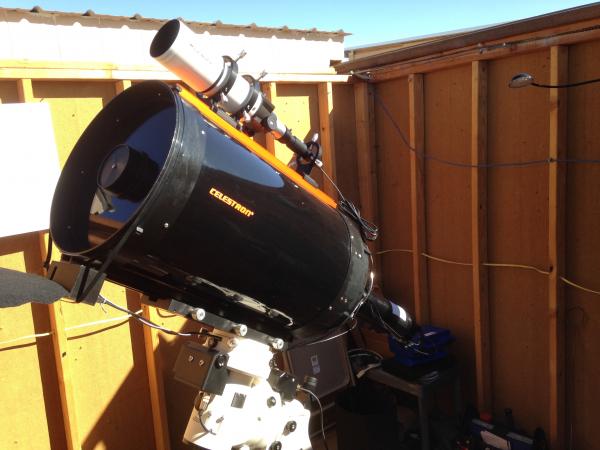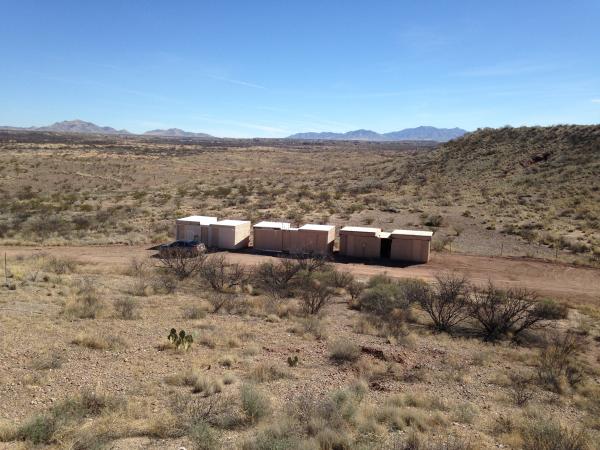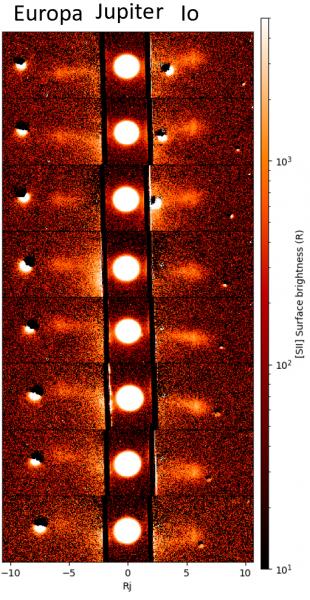
A large volcanic outburst on Io
The Planetary Science Institute said yesterday (January 3, 2023) that astronomer Jeff Morgenthaler discovered a large volcanic outburst on Jupiter’s moon Io last fall. It was the largest yet, he said. Morgenthaler has been remotely operating a new observatory he set up in 2017, in the desert near Tucson, Arizona. His goal is to monitor changes in volcanic activity on Io. He has seen some sort of outburst nearly every year, but the outburst of northern hemisphere autumn, 2022, was the largest so far. Morgenthaler said his observations can be reproduced by any ambitious amateur astronomer.
Io is the innermost of Jupiter’s four large moons and is the most volcanically active body in our solar system. It orbits so close to Jupiter that it is subject to gravitational stresses – or tidal forces – from the giant planet. Essentially, Jupiter squeezes Io like a rubber ball, creating Io’s volcanoes.
Morgenthaler was using the Planetary Science Institute’s IoIO observatory. NASA and the National Science Foundation provide the funding for IoIO, which stands for Io Input/Output. Morgenthaler commented:
One of the exciting things about these observations is that they can be reproduced by almost any small college or ambitious amateur astronomer. Almost all of the parts used to build IoIO are available at a high-end camera shop or telescope store.


How IoIO works
The Planetary Society explained:
IoIO uses a coronagraphic technique which dims the light coming from Jupiter to enable imaging of faint gases near the very bright planet. A brightening of two of these gases, sodium and ionized sulfur, began between July and September 2022 and lasted until December 2022. The ionized sulfur, which forms a donut-like structure that encircles Jupiter and is called the Io plasma torus, was curiously not nearly as bright in this outburst as previously seen.
Morgenthaler explained:
This could be telling us something about the composition of the volcanic activity that produced the outburst or it could be telling us that the torus is more efficient at ridding itself of material when more material is thrown into it.
Morgenthaler’s work involves studying changes in volcanic activity on Io to measure properties of Jupiter’s magnetosphere. A major goal of the project is to learn why ionized material from Io sticks close to Jupiter, rather than being flung out by Jupiter’s rapid rotation.
What these observations mean for Juno
While Morgenthaler has been scrutinizing Io from the ground, NASA’s Juno mission has been studying Jupiter from orbit. Juno has been orbiting Jupiter since 2016. Juno flew past Jupiter’s second moon outward, Europa, during the recent Io outburst. It is gradually approaching Io for a close flyby December 2023. The Planetary Society said:
Several of Juno’s instruments are sensitive to changes in the plasma environment around Jupiter and Io that can be traced directly to the type of volcanic activity observed by IoIO.
So, Juno’s measurements might be able to tell us if this volcanic outburst had a different composition than previous ones.

More IoIOs?
Morgenthaler said having one or more copies of IoIO running somewhere else would be very helpful in avoiding weather gaps and could potentially provide more time coverage each night of Jupiter’s highly dynamic Io plasma torus and sodium nebula. He said:
It would be great to see another IoIO come on line before Juno gets to Jupiter next December.
In addition to observing the Jovian sodium nebula, IoIO also observes Mercury’s sodium tail, bright comets and transiting extra-solar planets.
Visit this page to see a short video of IoIO images

Bottom line: An astronomer using a remotely operated telescope in the desert near Tuscon, Arizona, has been monitoring Io’s volcanoes. In fall 2022, he saw his largest outburst yet!











